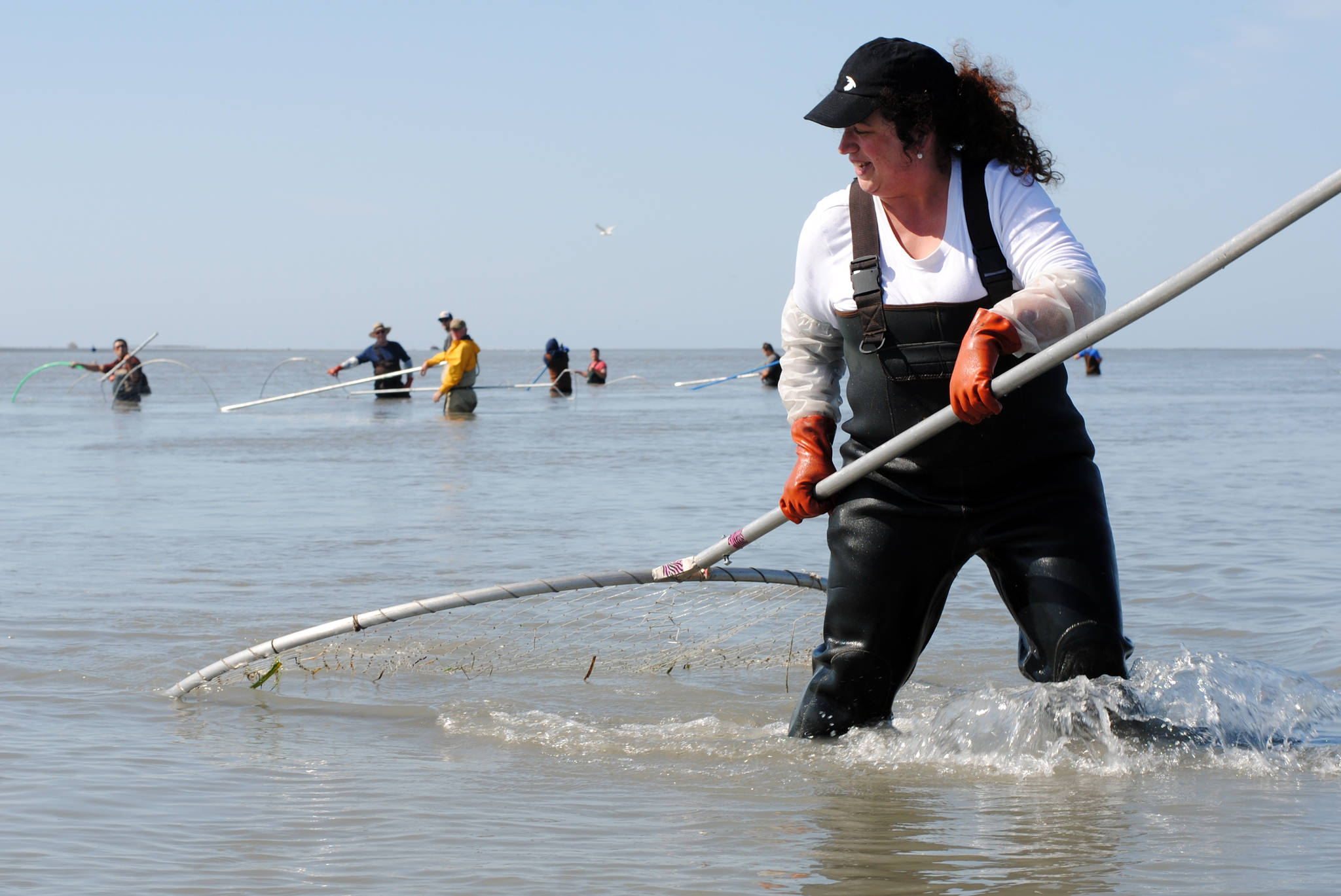No matter where they travel from, what their technique is or if they have fish in the cooler or not, one thing all the dipnetters on Kenai’s north beach seemed to agree with was that the sockeye salmon were running late.
“I think they’ve been holding back a little bit,” Julian Brooks of Anchorage said. “You know, that’s biology. They decide to do it when they want to do it, not when you want them to do it.”
Brooks said he was expecting to leave with 15 by the end of his stay in Kenai, but was also hoping to fill up a proxy license as well.
“It’s not bad,” he said. “I think I may come down one or two more times this year, try and fill that proxy out so we can feed everybody.”
Brooks got into Kenai on Saturday night and fished the evening tide, then started fishing again at 7:30 on Sunday morning.
“Well, the tide started at 4:34 a.m., but you can’t come out until six,” Brooks said. “I guess, I heard the run from 6 a.m. to 7:30 was really good and everybody was catching, but Ed and I got down here at about 7:30.”
Brooks said that he and his fishing partner, who he refers to as his surrogate father, visit Kenai a few times each summer as a bonding experience.
“We get a chance to do the father and son thing, which works because he doesn’t have a son and I didn’t have much of a father,” Brooks said. “There is a lot of catharsis there in fishing, right?”
Despite the slow run, though, Brooks is confident his freezer will be full this winter, as was Bryan Lauth of Anchorage, who was dipnetting for the first time this year.
“It seems like we used to always get them a lot earlier and a lot more thick. It’s a little slow,” Lauth said. “I’m still catching fish though…I’m looking forward to having to buy a new cooler because I have too many fish.”
Lauth had been in the water for only a few hours so far this year, while others around him had been clocking river time throughout the summer.
According to the Dipnet Kenai application, Lauth and anyone else planning on camping on the north or south beach on Sunday night were asked to be off the beach prior to the extreme high tide at 5:21 a.m. Monday morning.
“I usually try to come every other weekend and I try to work my schedule to get my dipnet in,” Annie Cromwell of Anchorage said. “I’m a flight attendant for Ravn Air and we fly Kenais and Homers. So, when we fly over the Kenai River, I peek to see if everybody is walking out with fish or if they are just standing there… I have a bird’s eye view every day, is that cheating?”
Despite her supposed advantage, Cromwell had only caught one fish that day.
“I caught five last time and one this time. Most of them got away so far,” she said. “I turn the net the wrong way… I’d like to say I’m learning.”
Zachary Murphy, of Palmer, who was fishing alongside Cromwell said overall the year was going worse but Sunday was the best it’s been.
“Past years, I’ve done a lot better than this,” Murphy said. “But Kasilof was the absolute worst earlier this year. I was in the water for two hours and did not get anything, but here is better so far.”
The Kenai River sonar has counted just about 306,000 late-run sockeye salmon as of July 22, less than half of the about 676,000 counted on the same day last year. On July 22, just over 14,000 fish were counted through the sonar.
In Kasilof, as of July 22, about 184,000 sockeye have been counted which is slightly more than last year’s count on the same date, about 170,000. On Saturday, just about 5,500 sockeye were counted through the Kasilof sonar.
No matter the amount of fish being caught, visitors to Kenai haven’t been deterred and neither have the locals.
“The fishing is awful,” said Matt O’Brien of Nikiski. “That’s what we should tell the tourists so they go elsewhere… We’ve caught like five so far this year, over there (on the south beach). We haven’t caught any today, though.”
Reach Kat Sorensen at kat.sorensen@peninsulaclarion.com

